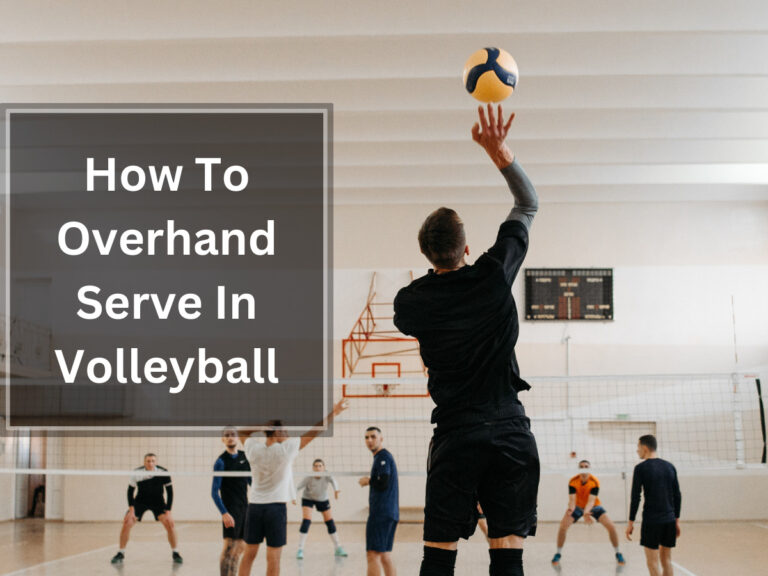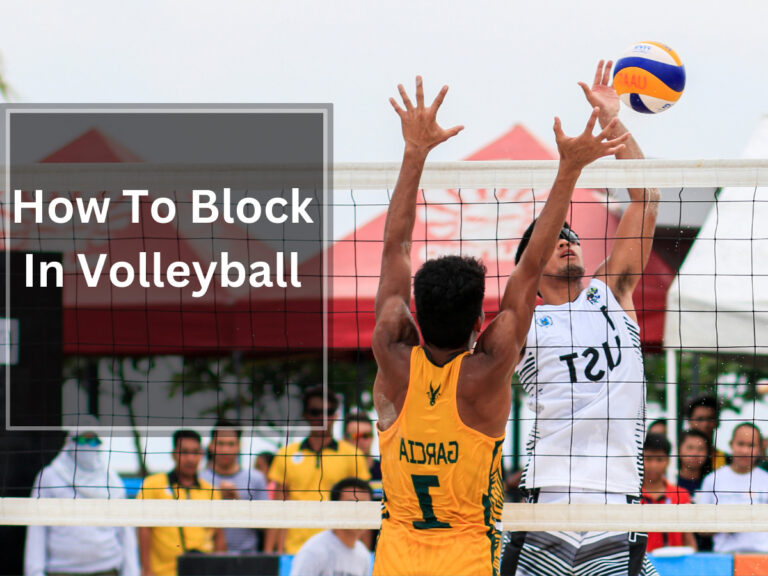Exploring the 5-1 Volleyball Rotation in Detail

Do you want to take your volleyball game to the next level? Then look no further than the 5-1 volleyball rotation.
This formation is like a well-oiled machine, with five powerful hitters and one setter working together seamlessly on the court.
It’s a strategy that offers endless possibilities for setting options and unleashing devastating attacks from all angles.
With the 5-1 rotation, you’ll witness incredible teamwork and dynamic plays that will leave your opponents in awe.
But don’t be fooled, mastering this formation takes dedication and practice.
From understanding the roles and responsibilities of each player to maximizing offensive options and maintaining a strong defense, there’s so much to learn.
So get ready to dive into the world of the 5-1 volleyball rotation, where precision meets power and every player has a crucial role in creating victory on the court.
Table of Contents
Understanding the Basics of the 5 1 Volleyball Rotation
The 5-1 volleyball rotation, the most commonly used formation in volleyball, provides numerous setting options and creativity, building strong relationships between hitters and setters and improving consistency in hitting.
In this formation, the setter’s positioning is crucial for the success of the team. By strategically placing themselves in the front court or back court, they have the freedom to set anywhere on the court, allowing for elaborate and clever sets that make it difficult for the opposing team to block or set up a solid defense.
Additionally, effective blocking techniques play a significant role in this rotation. Hitters and blockers need to work together to create hesitation in the blocking team, catching them off guard with different attacking options.
The 5-1 rotation emphasizes communication and coordination among players to execute these strategies effectively.
Roles and Responsibilities in the 5 1 Rotation
In the 5-1 formation, players have specific roles and responsibilities. The setter’s positioning is crucial as they start in the back court and run the offense by setting up their teammates for attacks. They need good court awareness and decision-making skills to effectively distribute the ball to different hitters.
The middle blocker has responsibilities focused on offense and defense. They play a key role in blocking at the net, aiming to disrupt opposing hitters’ attacks. They also need to be quick and agile in transitioning from blocking to hitting positions, providing another offensive threat for their team.
Both positions require strong communication skills and coordination with teammates to execute plays successfully.
Mastering the Setter’s Role in the 5 1 Rotation
Maximize your impact as the setter in the 5-1 formation by mastering key skills and making smart decisions to lead your team’s offense.
Developing a strong setter-hitter chemistry is crucial in the 5-1 rotation. By understanding each hitter’s preferences and tendencies, you can effectively distribute sets to optimize their attacking opportunities.
Communication is key, so make sure to establish clear signals and cues with your hitters. Additionally, being adaptable is essential when facing different defensive formations.
Adjusting your sets based on the positioning of blockers and defenders will create openings for your hitters to exploit. Stay observant and analyze the opposing team’s patterns to anticipate their defensive strategies.
With practice and experience, you can become a reliable and influential setter in the 5-1 rotation, leading your team to offensive success.
Maximizing Offensive Options in the 5 1 Rotation
By effectively utilizing the 5-1 formation, setters have the opportunity to create a multitude of offensive options that can keep opposing teams guessing and increase their team’s chances of success.
Did you know that teams running the 5-1 rotation often have higher hitting percentages compared to other formations?
In the 5-1, the setter has the ability to establish a strong connection with their hitters, allowing for consistent and effective attacks. This connection is crucial in maximizing offensive options as it enables quick and precise sets from various positions on the court.
With three front row attackers available in half of the rotations, the setter can distribute sets to different heights, speeds, and angles, making it difficult for defenders to anticipate and block.
The versatility of the 5-1 formation provides opportunities for deceptive plays and creates hesitation among blocking teams.
By mastering this formation and establishing an effective setter-hitter connection, teams can maximize their offensive potential and increase their chances of scoring points.
Maintaining a Strong Defense in the 5 1 Rotation
To maintain a strong defense in the 5-1 rotation, you must prioritize communication and coordination among your teammates. This will effectively cover weaknesses and adjust defensive duties based on the opposing team’s attacks.
Maintaining defensive positioning is crucial in this formation. Each player needs to be aware of their designated area and work together to prevent any gaps or holes in the defense.
Communication is key to ensure that everyone knows their responsibilities and can quickly react to different offensive strategies. By communicating effectively on defense, you can anticipate the opponent’s actions and make necessary adjustments.
It’s important to constantly communicate with your teammates, whether it’s calling out switches, directing blockers, or providing backup support.
With strong communication and solid defensive positioning, you can effectively counter the opponent’s attacks and maintain a strong defense in the 5-1 rotation.
Strategies and Techniques for Success in the 5 1 Rotation
Now that you understand how to maintain a strong defense in the 5-1 rotation, let’s dive into strategies and techniques for success in this formation.
To ensure effective communication on the court, it is crucial for players in the 5-1 rotation to develop specific strategies. One strategy is using hand signals or verbal cues to quickly communicate plays and assignments. This helps create a cohesive team dynamic and minimizes misunderstandings during fast-paced gameplay.
Additionally, adapting to different opponent strategies is key in the 5-1 rotation. By analyzing the opposing team’s patterns and adjusting defensive positions accordingly, players can effectively counter their attacks and maintain control of the game.
Adapting also means being flexible with offensive plays, changing up sets and attacking angles based on what works best against specific opponents.
These strategies will enhance your team’s performance in the 5-1 rotation, leading to more successful matches.
Common Challenges and Solutions in the 5 1 Rotation
One of the most common challenges in the 5-1 rotation is maintaining effective defensive positions. However, teams can overcome this obstacle by emphasizing communication and coordination among players. By constantly communicating, players can ensure they are in the right positions at the right time. This includes calling out switches, covering for each other, and adjusting positions based on the opponent’s attack.
Another solution is to prioritize defensive training and drills during practice sessions. This will help players improve skills such as reading hitters, anticipating plays, and making accurate digs or blocks. Coaches can also implement specific defensive strategies based on their team’s strengths and weaknesses. These strategies may involve positioning certain players in key areas to cover potential gaps or vulnerabilities in defense.
Overall, by addressing these common challenges head-on and implementing effective solutions, teams can improve their defensive performance in the 5-1 rotation.
Frequently Asked Questions
What are the key differences between the 5-1 and the 6-2 volleyball rotations?
The key differences between the 5-1 and 6-2 volleyball rotations are that in the 5-1 rotation, there is one setter who sets from both back court and front court, while in the 6-2 rotation, there are two setters who only set from the front court. The libero role can be incorporated into both rotations to provide better defensive coverage. The 5-1 rotation offers more offensive versatility with two front row attackers at all times, while the 6-2 rotation allows for more setting options with two skilled setters.
How can the libero position be utilized effectively in the 5-1 rotation?
To effectively utilize the libero position in the 5-1 rotation, you can take advantage of their defensive skills and flexibility. The libero provides better defensive coverage, allowing for strategic positioning and quick reactions. Additionally, they can enhance communication and coordination among the team members on the court.
What are some common challenges that teams face when running a 5-1 rotation and how can they be overcome?
Running a 5-1 rotation can pose challenges such as defensive weaknesses and complexity for new players. Solutions include covering defensive weaknesses, disciplined play, and consistent practice to master the formation.
Are there any specific strategies or techniques that can be used to maximize offensive options in the 5-1 rotation?
To maximize offensive options in the 5-1 rotation, you can utilize the setter effectively by incorporating various setting strategies. This includes quick sets, back sets, and combination plays to keep the opposing team guessing and create opportunities for your hitters to score.
How can teams maintain a strong defense in the 5-1 rotation, especially in positions 1 and 6?
Maintaining defensive positioning in the 5-1 rotation, especially in positions 1 and 6, is crucial. Communication and teamwork are key. Ensure players understand their roles and responsibilities, anticipate plays, and communicate effectively to cover all areas of the court.










